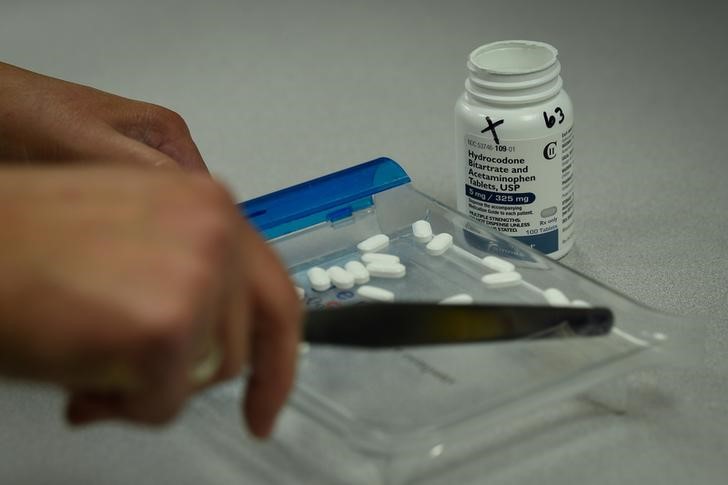(Reuters) - The U.S. Drug Enforcement Administration (DEA) on Friday proposed a 20 percent reduction in the manufacture of certain commonly prescribed opioid painkillers as well as other controlled substances for next year.
The proposal comes as U.S. regulators and lawmakers take steps to limit the supply of opioids - a class of drugs that include prescription painkillers and heroin - to combat the epidemic of abuse, overdose and addiction.
Under the Controlled Substances Act, which organizes drugs into groups based on risk of abuse or harm, most opioids come under the Schedule II category. The higher the category, the smaller the risk.
Demand for certain Schedule II opioid painkillers including morphine, fentanyl, oxycodone and hydrocodone has dropped after the imposition of measures such as prescription-drug monitoring programs, the DEA said.
Still, opioid overdose kills 142 Americans a day, and drug overdoses now surpass deaths caused by gun homicides and car crashes combined, according to a White House commission formed to combat drug addiction and the opioid crisis.
The DEA's proposed production quotas for Schedule I and II substances reflect the amount needed to meet the United States' medical, scientific, industrial, export and reserve requirements, the agency said.
Members of the public can comment on the proposal over the next 30 days.
The DEA recommendation comes about two months after the U.S. Food and Drug Administration took the rare step of asking a drugmaker to withdraw its opioid painkiller from the market, citing the public health crisis. Endo International Plc in early July agreed to pull the drug, Opana ER.
Earlier this week, U.S. Attorney General Jeff Sessions unveiled a plan to go after doctors and pharmacies suspected of healthcare fraud by over-prescribing opioids.

Purdue Pharma - the maker of one of the most commonly abused long-acting oxycodone painkillers called Oxycontin - was not immediately available for comment.